
Sir Thomas Tresham was a prominent recusant Catholic landowner in Elizabethan Northamptonshire. He died two years after the accession of James VI and I.

Edward Seymour, 1st Earl of Hertford, 1st Baron Beauchamp, KG, of Wulfhall and Totnam Lodge in Great Bedwyn, Wiltshire, of Hatch Beauchamp in Somerset, of Netley Abbey, Hampshire, and of Hertford House, Cannon Row in Westminster, is most noted for incurring the displeasure of Queen Elizabeth I by taking part in more than one clandestine marriage.
George Montagu, 1st Earl of Halifax, of Horton, Northamptonshire, was a British politician who sat in the House of Commons from 1705 to 1715 when he became a peer.
This is a list of the High Sheriffs of Northamptonshire.
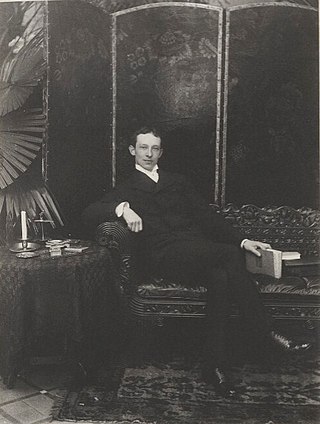
Sir Alfred Edward Pease, 2nd Baronet, was a British Liberal Party politician who sat in the House of Commons between 1885 and 1902 and who became a pioneer settler of British East Africa, now Kenya.
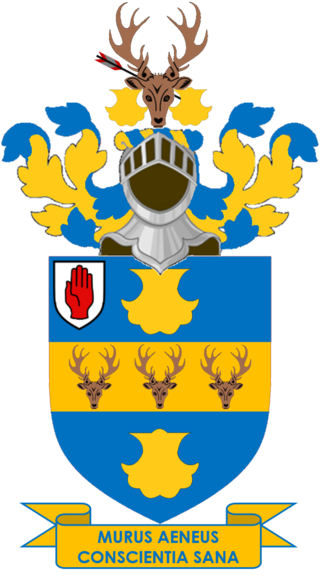
The Loder Baronetcy, of Whittlebury in the County of Northampton, and of High Beeches in Slaugham in the County of Sussex, was created in the Baronetage of the United Kingdom on 27 July 1887 for Robert Loder, who had previously represented New Shoreham in the House of Commons as a Conservative.

Sir Thomas Crewe, of Stene, between Farthinghoe and Brackley in Northamptonshire, was an English Member of Parliament and lawyer, and served as Speaker of the House of Commons from 1623 to 1625.
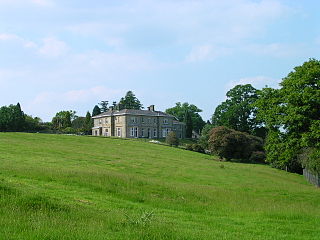
Leonardslee is an English country house and English landscape garden and woodland garden in Lower Beeding, near Horsham, West Sussex, England. The Grade I listed garden is particularly significant for its spring displays of rhododendrons, azaleas, camellias, magnolias and bluebells, with the flowering season reaching its peak in May. The estate includes a 19th-century Italianate style house and lodge as well as an intact Pulhamite rockery.
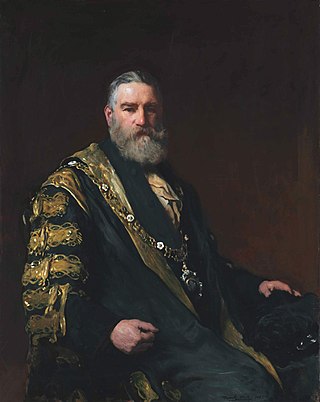
Sir Robert Nicholas Fowler, 1st Baronet DL JP was a member of parliament and Lord Mayor of London.

Middleton Lodge is a Georgian Palladian mansion set within 200 acres (0.81 km2) of open countryside, on the outskirts of the village of Middleton Tyas, a mile or so off the A1 near Scotch Corner and a 15-minute drive from Darlington, County Durham.

Sir Thomas Kitson was a wealthy English merchant, Sheriff of London, and builder of Hengrave Hall in Suffolk.
Charles FitzRoy, 3rd Baron Southampton was a British peer.
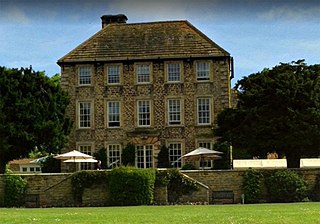
Headlam Hall is a 17th-century country house at The Green, Headlam, near Gainford, County Durham, England. It is a Grade II* listed building now in use as a hotel and country club.
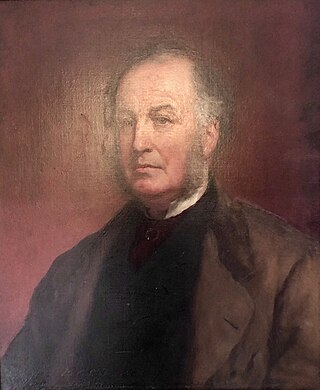
Sir Robert Loder, 1st Baronet, DL, JP was an English landowner, magistrate and Conservative politician.
Sir William Fitzwilliam was a Merchant Taylor, Sheriff of London, servant of Cardinal Wolsey, and a member of the council of Henry VII.

Sir Justinian Isham, 4th Baronet was an English landowner and Tory politician, who sat in the House of Commons almost continuously from 1685 until his death in 1730. He was the longest serving member, later termed Father of the House, from 1729 to 1730.
Sir John Garrard, 3rd Baronet (1638–1701), was an English politician.

The Manor of Groves Hotel in High Wych, near Sawbridgeworth in Hertfordshire is a building of historical significance and is listed as Grade II on the English Heritage Register. It was remodelled over an existing older building in 1823 by a prominent London lawyer. The house was a private residence for many distinguished people over the next 150 years and in 1988 was converted to a hotel. It still serves this function and provides accommodation, dining facilities and caters for events such as conferences and weddings. There is also a golf course.

Lympstone Manor in Exmouth, England, is a building of historical significance and is Grade II listed on the English Heritage Register. It was mainly built in the 1760s around an older building which had been used as a farmhouse. At this time the owner was Charles Baring, a wealthy banker who had just been married. It was the residence of many notable people for the next two centuries. Today it is a hotel, restaurant and vineyard.
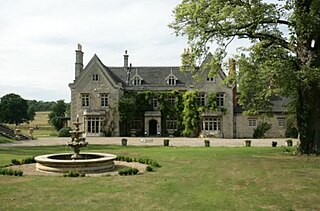
Pipewell Hall in Northamptonshire, England, is a building of historical significance and is Grade II listed on the English Heritage Register. It was built near the ruins of a Cistercian abbey in 1675. At this time it was owned by the Barons of Powis. The house was constructed from the stones of the abbey. The Hall was the home of many notable people over the next three centuries and is now a wedding venue.




















